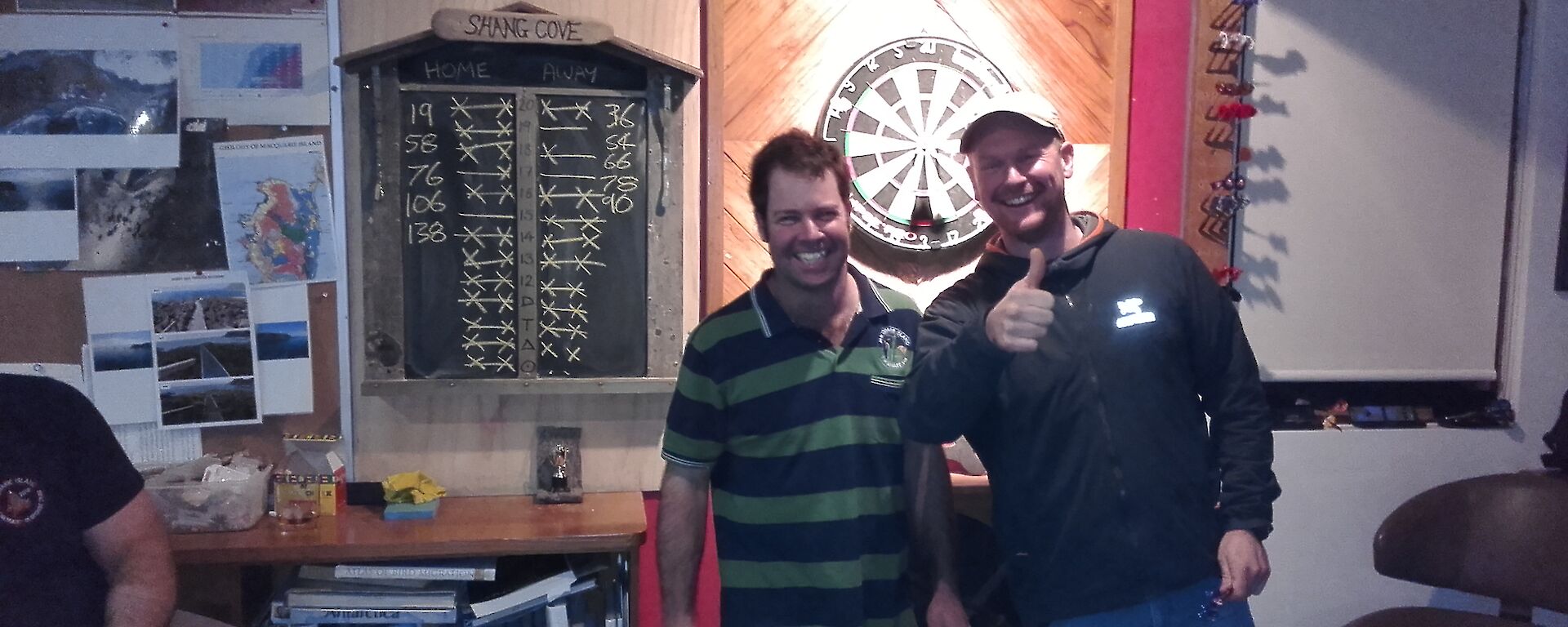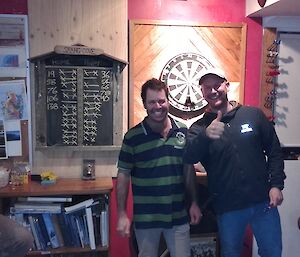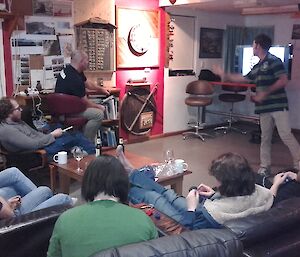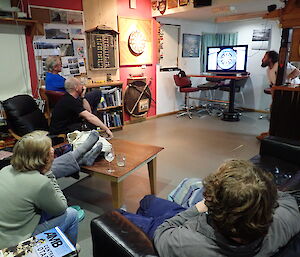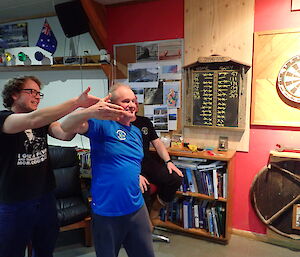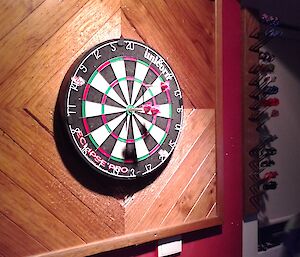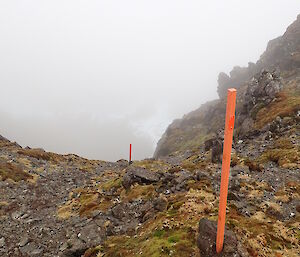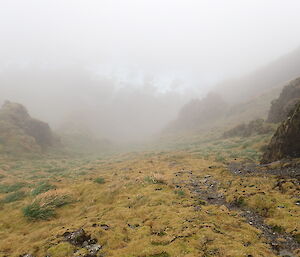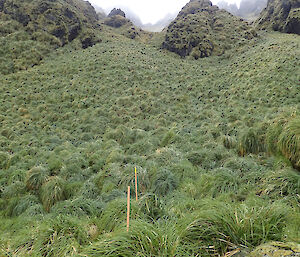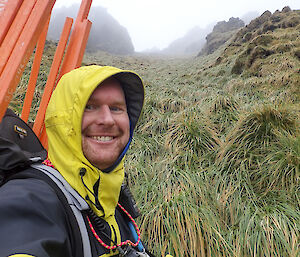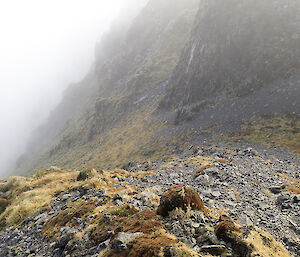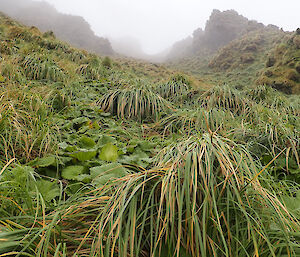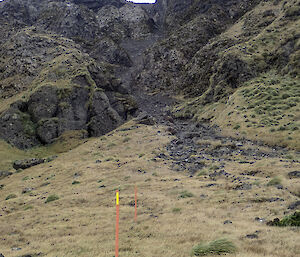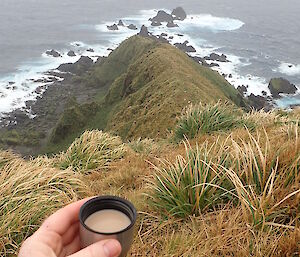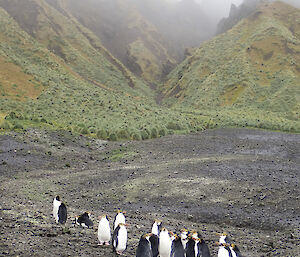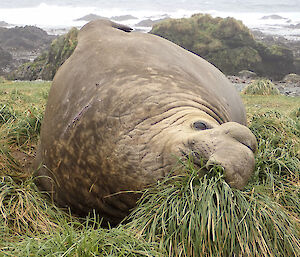Inter-station darts have been played for decades between ANARE stations and other Antarctic and sub-Antarctic stations. In earlier times it was HF radio that was used to communicate with the other stations. Even though reception was not always clear, the joy in hearing fellow expeditioners, jokes, banter, conversation with people off station but still part of ‘your world’ was always a serious event.
To uphold this tradition, the inter-station darts competition between AAD stations for 2018 is underway. Modern day technology was enabled so that next to the dart playing area a large TV displayed the view from the other station’s camera plus sound, all in real time. A driver for the competition at Macca was Tim, taking on the task of player training, selection and scheduling Macca games. The great effort was rewarded with good outcomes by all teams.
First up we played Casey, with a full attendance by Macca for this first match providing robust support. This was expressed in different ways: scoring games, camera control, reading, knitting, shouting encouragement. We discovered the fun in being able to see and talk to the Casey crew in between the games.
Next up was Davis, who successfully won the first game, managing to deflate the collective Macca ego a little after their clean run with Casey. It was described as an epic night, full of good cheer, jokes, laughter and nail biting suspense as the result determined at the end of an eventful third game.
Now it may have been an advantage to Macca that all games were played after dinner on Fridays, as due to the time differences at the other stations they all played earlier. The game with Mawson was played around their lunchtime. However, that hasn’t stopped the continental stations winning in past years. Not this time though, after another great night/day with the Mawson crew, Macca came out on top. The result broadcast to Macca field parties accompanied by cheering and singing. Smiles all round, we must do this again!
Norbert Trupp, Station Communications Technical Officer

